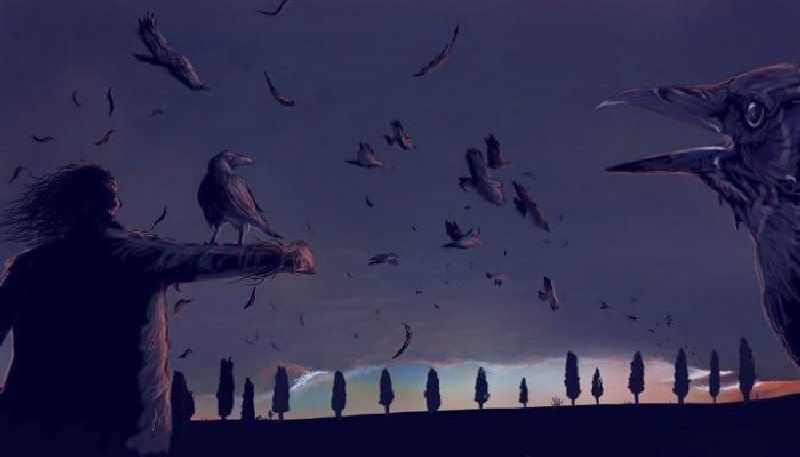(5) The Nutcrackers Mighty Memory
_____________________________________________
Tricks of nutcracker's mighty memory revealed
_____________________________________________
The tricks behind one of the most spectacular feats of memory in the natural world have been revealed.
The Clark's nutcracker (Nucifraga columbiana, a Corvid) hides between 20,000 and 25,000 pine seeds in up to 5000 different caches to provide for itself and its new chicks through the cold winter and spring of the Rocky mountains. Remarkably, the birds can recall the locations up to nine months later.
"I can't think of a more extreme example," says Alan Kamil, who has been studying the bird's abilities with colleagues at the University of Nebraska. But he adds that many other, less studied species also hoard food.
"The birds are clearly using spatial memory," he says, but there are many different ways of doing this. In a series of experiments, Kamil found that for the nutcrackers the distance from a particular rock or a tree was a less important memory aid than the compass bearing from that landmark, suggesting the birds use intersecting compass bearings to locate the caches.
Honey bees
Another strategy is the photographic memory approach used by honey bees, which remember locations by retaining an image of the place. But nutcrackers were able to return their caches from a different direction from that along which they had initially visited the location - they did not use a fixed path.
Two compass bearings would be sufficient to find a particular cache, but Kamil found the birds were able to load their brains with multiple bearings for each hoard, presumably to increase the accuracy of location. His work shows that the bird's "compass" is accurate to an impressive plus or minus 4Ü.
However, such prodigious memory feats are likely to require flexibility. Kamil thinks the bird could adapt its strategy depending on the exact environment of the cache. For example, when a landmark is relatively close to a hidden store, remembering a distance might be a smarter tactic.
"Bird brain" is an unfair insult, he says: "Birds are not as dumb as people believe".
This research was presented at the American Association for the Advancement of Science's 2002 annual meeting in Boston.
Damian Carrington, Boston
Tricks of nutcracker's mighty memory revealed
_____________________________________________
The tricks behind one of the most spectacular feats of memory in the natural world have been revealed.
The Clark's nutcracker (Nucifraga columbiana, a Corvid) hides between 20,000 and 25,000 pine seeds in up to 5000 different caches to provide for itself and its new chicks through the cold winter and spring of the Rocky mountains. Remarkably, the birds can recall the locations up to nine months later.
"I can't think of a more extreme example," says Alan Kamil, who has been studying the bird's abilities with colleagues at the University of Nebraska. But he adds that many other, less studied species also hoard food.
"The birds are clearly using spatial memory," he says, but there are many different ways of doing this. In a series of experiments, Kamil found that for the nutcrackers the distance from a particular rock or a tree was a less important memory aid than the compass bearing from that landmark, suggesting the birds use intersecting compass bearings to locate the caches.
Honey bees
Another strategy is the photographic memory approach used by honey bees, which remember locations by retaining an image of the place. But nutcrackers were able to return their caches from a different direction from that along which they had initially visited the location - they did not use a fixed path.
Two compass bearings would be sufficient to find a particular cache, but Kamil found the birds were able to load their brains with multiple bearings for each hoard, presumably to increase the accuracy of location. His work shows that the bird's "compass" is accurate to an impressive plus or minus 4Ü.
However, such prodigious memory feats are likely to require flexibility. Kamil thinks the bird could adapt its strategy depending on the exact environment of the cache. For example, when a landmark is relatively close to a hidden store, remembering a distance might be a smarter tactic.
"Bird brain" is an unfair insult, he says: "Birds are not as dumb as people believe".
This research was presented at the American Association for the Advancement of Science's 2002 annual meeting in Boston.
Damian Carrington, Boston

![[Go to Site Index]](http://i6.photobucket.com/albums/y225/Abramelinn/Banner_Crow4.jpg)

<< Home